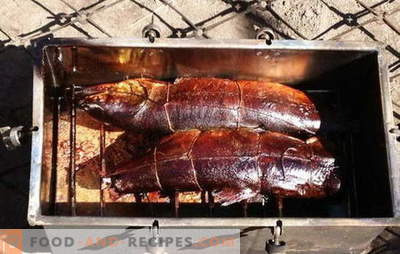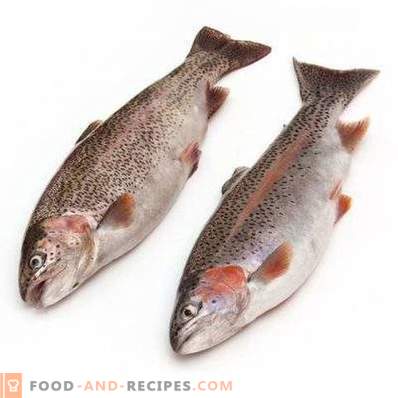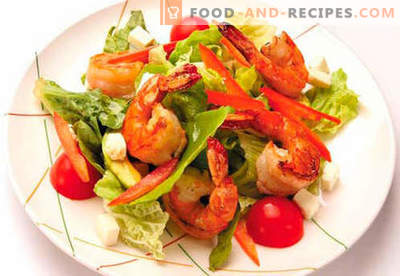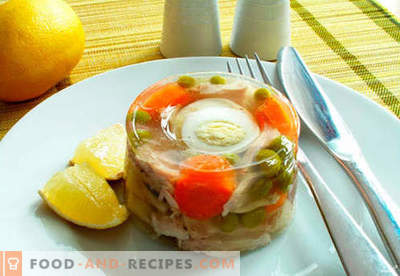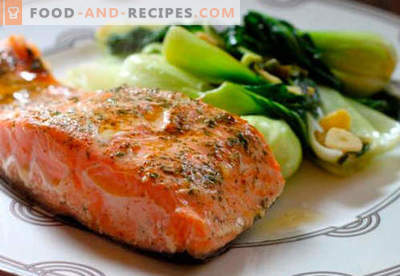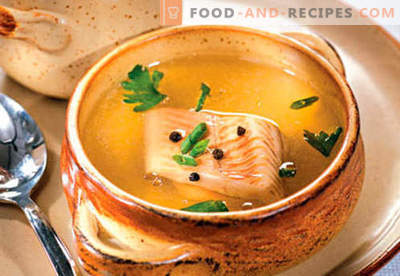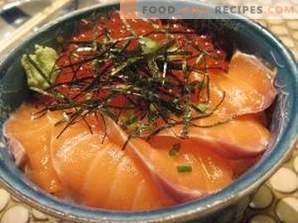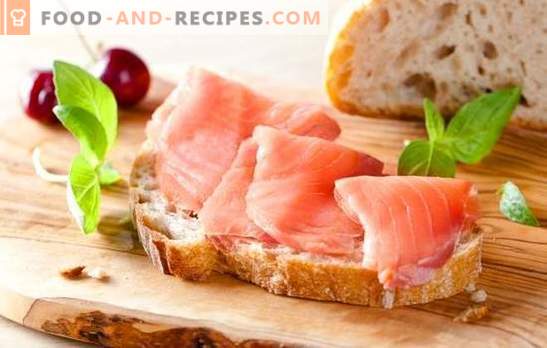
The red fish is called the salmon family. On the counter you can see a variety of names, which leads to confusion. In fact, salmon is not a fish, but the gastronomic name of the whole family. Trout and salmon only relate to it. Both one and the other fish can be called salmon. But is there a difference between them?
In fact, it is very simple to distinguish them by external signs. It is important to be able to do this, since the store often gives one look after another, and they do it by no means by chance.
Does size matter?
What else! The larger the fish, the less bones, more profit, less waste, easier to use in cooking. And here the championship belongs to salmon. The weight of adult carcasses can be 7-10 kg. Usually oriented in length. As soon as the fish reaches 1.5 meters, it is slaughtered. It is the slices of this fish that can be observed in the windows of large stores. Huge chunks of red fish attract attention.
Unlike salmon, trout are very modest in size. Carcass weight rarely exceeds 3 kg.
Often you can buy small fish up to 1-2 kg, length up to 30 cm, sometimes it is cooked whole, which is not possible with salmon. Large trout carcasses are used for steaks, but less often than salmon. Inexperienced buyers are advised to rely not only on size, but other signs should be explored.
By the way, under the name “trout” there are several species of fish that have similar characteristics, but live in fresh and saline water bodies. It is believed that the trout live only in a clean environment. In the dirty water, this fish is not found. It is recommended to give it to children.
How does trout and salmon look like
Outwardly, trout and salmon are also different, it is not about size. Each fish has a different carcass shape. Salmon is more streamlined, smooth, horizontal sections in different areas are not very different in size. Trout has extended patches.
What are the other differences:
- The scales of trout are smaller than those of salmon. This is largely due to the size of the fishes.
- Salmon has a more oblong head, the front part of the skull (rostrum) is more prominently advanced. In trout, it is less pronounced, able to slightly truncated form.
- Salmon has a relatively even silver scales on the entire carcass, only on the abdomen a slightly lighter shade.
- Trout is unevenly colored. Also affects the habitat. Most often the back has greenish shades, on the sides there are silver scales, sometimes white or light gray. This combination creates a weak band.
Color and type of meat
Often in the shops they sell cut fish, you can buy salted (slightly salted, slightly salted, smoked) salmon. It is clear that a piece of fish 150-200 grams to determine the size of the carcass or the color of scales is impossible. In this case, we look at the very pulp or fish meat.
Main features and differences:
- Salmon always has white small streaks. This is fat, which gives juiciness, tenderness to this species. Trout has no such veins.
- If salmon fat is evenly distributed throughout the carcass in the form of a white net, then trout has more of it on the belly. This is similar to many types of white river fish. The layers of fat in adults almost crowded out the meat in the lower region. In the shops you can find separately smoked belly, usually they are from trout.
- Salmon meat has a light pink color with an orange subtone. This is the salmon shade. The name is often found in the field of fashion and beauty. By the way, it is the salmon shade that will be fashionable in 2019, the Pantone Color Institute says.
- Trout meat is directly dependent on the fish’s habitat. If it is caught in fresh water, it has a light shade. Sea trout are more saturated, very similar to salmon when cut, but we remember about the veinlets, they are not in this meat.
These signs are more suited to fresh salmon. If salmon and trout are frozen, they have almost the same shade, and the veins can not be seen under the ice crust. That is why it is recommended to pamper yourself with only fresh delicacies. Frozen fish, fillets and steaks from it are much easier to fake, which is what unscrupulous vendors and producers go for.
Important! Red fish should not have a color corresponding to the name. Bright scarlet and orange shades do not exist in nature. Such an intense color of meat should be alerted. Most often it is achieved by artificial coloring, which dishonest manufacturers trade in order to improve the presentation of the product.
How much does salmon cost?
Pricing depends on various factors, place of purchase, country of residence, but salmon is usually much more expensive than trout. Even cheaper trout is river or freshwater, it is found in Norwegian rivers. The catch of local fishermen can be bought for a penny, which cannot be said about salmon. Sea fish is valued more, contains other substances, although they have a similar taste, as well as flavor.
By the way, salmon is no longer caught, this fish is listed in the Red Book. Everything that we see on the shelves is grown in artificial conditions (with the exception of poaching products). World leader in production is Norway.
Which is healthier and better: trout or salmon
About the benefits of red fish, you can write books. But which salmon is better? Salmon is considered a true delicacy in all respects. River trout does not belong to it, it is poorer in composition of valuable substances, contains less fat.
For comparison, there is 15 g in salmon, only 4.5 g in trout per 100 g. Calories are 220 kcal and 150 kcal, respectively.
So, the conclusion:
- salmon is more expensive, trout is cheaper;
- salmon contains more essential fatty acids;
- salmon meat with fatty streaks;
- trout can be sea and freshwater, which affects the composition and color of meat;
- Trout is smaller, more bones are produced in the piece.
Despite the difference and advantages of salmon, both species of red fish are beneficial to humans. Even more valuable is the fresh product, which has not been subjected to coloring, freezing, transported and stored in proper conditions. If there is an opportunity to purchase high-quality trout, there are farms in our country, it is better to give preference to it, rather than imported salmon of dubious origin.
